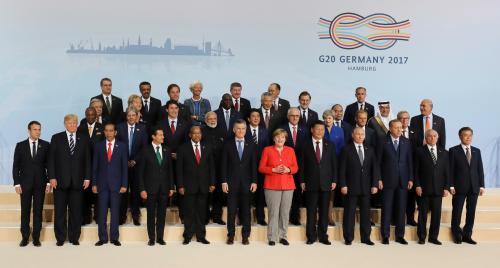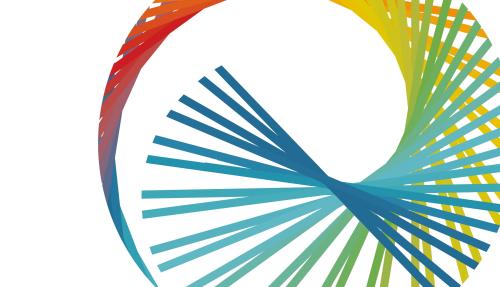Below is a viewpoint from Chapter 6 of the Foresight Africa 2018 report, which explores six overarching themes that provide opportunities for Africa to overcome its obstacles and spur inclusive growth. Read the full chapter on the changing nature of Africa’s external relationships here.
Impressive economic growth rates and increased democratization across Africa are occurring alongside persistent fragility. In some African countries, deep-seated governance challenges remain, low-intensity violent conflict persists, and political volatility threatens to undermine democratic gains. This is particularly true in countries that are currently affected by violent conflict. While violence might abate and peace deals get signed, the mammoth goal of stabilizing these countries, rebuilding communities, and ensuring that every African citizen feels secure continues to elude practitioners and policymakers.
Persistent low-intensity conflict undermines recent progress and amplifies existing challenges. Addressing endemic insecurity in Africa’s conflict-affected states requires a lot more than peace accords and peacekeeping troops. Repairing the broken contract between those in government and the governed is crucial, though often neglected. Economic revitalization programs, an important part of reform and recovery, are often led and financed by foreign assistance. Unfortunately, “side effects” of these programs are aid dependency, elite capture, a protracted war economy, and perverse political economy relationships. There is an urgent need to rethink the nature, design, and application of foreign assistance in this context.
While external assistance is necessary in countries recovering from trauma, evidence suggests that by establishing parallel relationships with both the citizens and the governments, such assistance subverts the social contract.
As Figure 6.6 illustrates, the design and delivery of external assistance programs has fostered a generation of aid-dependent democracies, which have a semblance of participatory and representative governance but are neither effective nor accountable. Matt Andrews and co-authors describe this phenomenon as “isomorphic mimicry.” While external assistance is necessary in countries recovering from trauma, evidence suggests that by establishing parallel relationships with both the citizens and the governments, such assistance subverts the social contract. Both governments and their citizens invest more time developing relationships with external partners (NGOs, bilateral agencies, and multilateral institutions) than with each other. Consequently, Africa’s aid-dependent economies have anemic rates of domestic resource mobilization, weak institutions, entrenched inequality, institutionalized politics of exclusion, and (most importantly) persistent insecurity.

Africa’s financial sector could offer a pathway to understanding and addressing this malaise. The government of Poland used foreign assistance differently during its post-Berlin Wall reconstruction phase. Rather than do “development as usual,” the government used foreign assistance from the United States to establish the Polish American Enterprise Fund in 1989. Foreign assistance, which was routed through the banking sector and managed commercially by Polish expatriates, was used to jump-start the country’s private sector and help create conditions for sustained peace. This innovative approach limited the scope of resource capture, forestalled aid dependence, and bolstered domestic resource mobilization. Post-apartheid South Africa also experimented with an enterprise fund with mixed results, largely because their fund was run like a development project and did not have an independent and technical oversight board.
Furthermore, foreign assistance could be leveraged to include resources from corporate social responsibility funds, African government programs, and diaspora remittances. This would broaden the scope and scale of program oversight. Rather than replicating traditional development models, Africa’s banking institutions and mobile telephony could provide an ideal conduit for reform. As Figure 6.7 illustrates, channeling post-conflict foreign assistance in this manner could contribute to building peace and security in Africa’s conflict-affected states by bolstering domestic institutions and bridging the yawning state-society divide. Evidence suggests that communities and countries whose citizenry have a greater stake in economic prosperity and politics are less likely to perpetrate and reignite violent conflict.

Engendering economic recovery in Africa’s conflict-affected states is challenging, in part because vulnerable communities are not easily reached with traditional financial instruments. Many of these communities, by virtue of this exclusion, are more susceptible to extremist radicalization.
First, we need a shift in focus from donor-led economic projects to targeted initiatives promoting private enterprise. After decades of policy-driven foreign assistance, it might be time to consider re-configuring our approach in order to prioritize entrepreneurship and leverage other funding streams. This will require audacious leadership, strong partnerships, and innovative thinking; not necessarily new money.
Second, Africa’s fledgling mobile banking innovations could be leveraged to facilitate domestic resource mobilization, particularly among the unbanked. The availability of financial instruments at household and community levels could build a viable constituency for peace that rewards the innovators and risk-takers. Digital money platforms could be utilized as mechanisms to enhance accountability. Ultimately, supporting digital and financial innovation is paramount.
Third, prioritizing communities (not political groups) in economic revitalization programs in Africa’s conflict-affected states could lead to more effective and sustainable solutions. The use of familiar institutions, relationships, and technology is often better than establishing project-driven parallel delivery mechanisms. Investing in the development of resilient local institutions could serve as a bulwark against what sometimes seems to be an inexorable slide toward violent extremism.







Commentary
Foresight Africa viewpoint – Banking on peace in Africa’s conflict-affected states
January 25, 2018